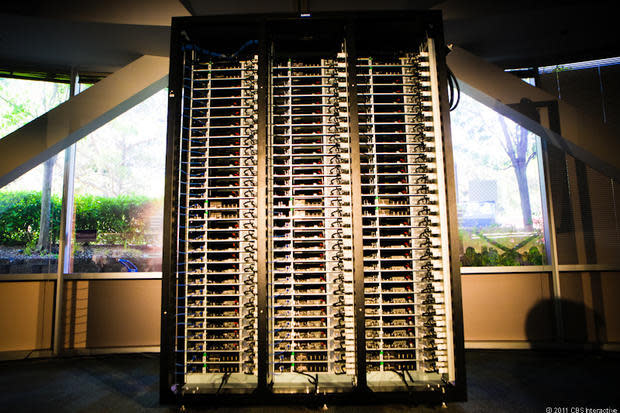Five innovations that are key to the future of data centers

A server rack custom built for Facebook.
Image: James Martin/CNET
If people are the heart of an organization, then the data center could be considered its brain, and maybe even its mouth. Quality storage and handling are key to an organization's success.
The technologies and processes that power our data centers have grown at an exponential rate. What was once considered state of the art is now considered a relic, and the IT skills needed to manage these new data centers are changing as well.
As we move further in 2015, it's important to take a look at some of the hotly debated trends and technologies and see how they might affect your organization in the future.
Here are five innovations that will impact the future of the data center.
1. Artificial intelligence
As more and more companies make advances in artificial intelligence (AI) and machine learning, it is only a matter of time before those innovations make their way into data centers. Last year, Google made headlines when it announced that it was using machine learning through neural networks to optimize its data centers, even releasing a white paper explaining the process.
Google primarily used its system to manage and optimize the data center operations, specifically the IT load, temperature, and proficiency of cooling equipment. All of this contributed to a more energy efficient data center, but AI could end up proving useful for other data center issues as it is further developed, such as automating certain drives for specific tasks and so on.
2. IPv6
It's no secret that we've exhausted a lot of our options regarding current IPv4 (Internet Protocol version 4) addresses -- IPv4 ran out of addresses and the routing tables have gotten too big. The intended replacement that will, hopefully, alleviate this issue is the introduction of IPv6 (Internet Protocol version 6). While probably still a ways off, IPv6 will definitely affect the data center.
IPv6 addresses are made up of eight separate groups, separated by colons, of four hexadecimal numbers. IPv6 addresses open up a ton of new IP addresses, but are designed to be compatible with IPv4 as well. In addition to the increase in addresses, IPv6 offers other benefits to increase efficiency, such as improved security and new services support. At this point, adoption is paltry with US adoption around 14.5%, similar to some European countries, and adoption in China hitting right at 1.6%.
3. Solid state drives
Solid state drives (SSDs) are nothing new, but they are still a touchy subject in the enterprise data center, due to expense and interface issues. While Moore's Law has done its fair share of making SSDs cheaper than they used to be, they still require a hefty investment relative to their spinning counterparts and have some interface issue to contend with. However, more and more companies are beginning to use them.
While few, if any, companies have gone full flash, the performance and durability of SSds can't be denied. Hybrid storage solutions present a unique way to experiment with flash storage without breaking the bank. For example, using SSDs to handle caching can speed access to critical data without going full monty. As the technology behind SSDs mature, though, we will likely see them replacing hard disk drives in the data center.
4. Virtualization
Another IT constant that will continue to drive change in the data center is virtualization. The list of current benefits is long, including better testing, easier backups, and faster redeployments, among others. There are arguments about the viability of virtualization, especially regarding data reading from storage in virtual environments. However, new virtualization technologies are arriving every day to improve the performance of virtualization in the data center and make it a better option than it once was.
One of these innovations is that of the virtual storage area network (VSAN). Recently, VMware announced its Virtual SAN, or VSAN -- a software-defined storage system built into the hypervisor. Virtualization tools, like VSAN, helps to increase flexibility in the data center, as well as helping with automation as well.
5. Cloud solutions
Yes, it is 2015 and we are still talking about the cloud. That's because the cloud conversation is far from being over. While some companies went running toward the cloud, most approached it with reserve, because the pros and the cons of the cloud depend so heavily on the industry your enterprise is in.
For many, the hybrid cloud solution works well to balance the performance and simplicity of the public cloud with the security and stability of an on-premise data center. In addition to security concerns, cloud costs are still a barrier for some companies. As cloud solutions become more secure overall and continue to drop in price, we will likely see more moves to data centers that are primarily cloud-based.

